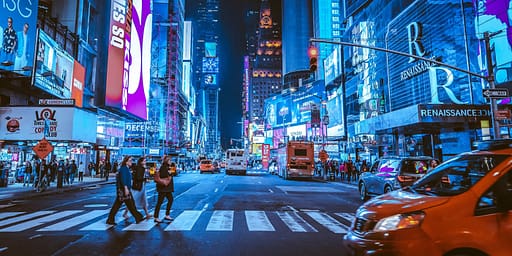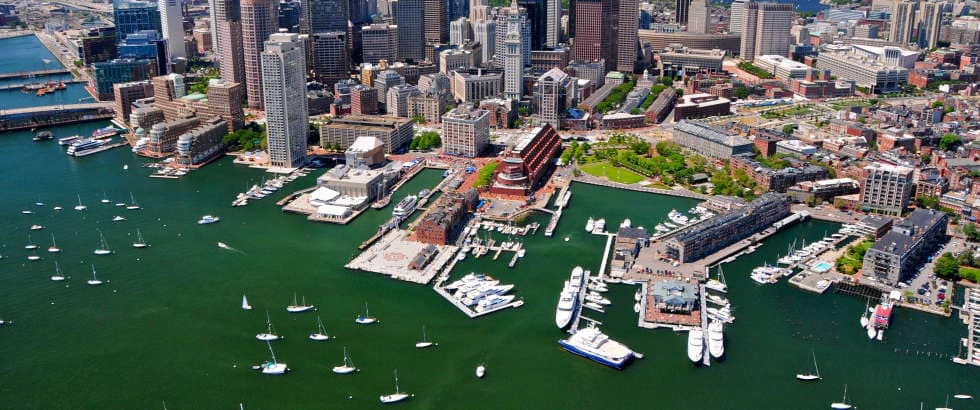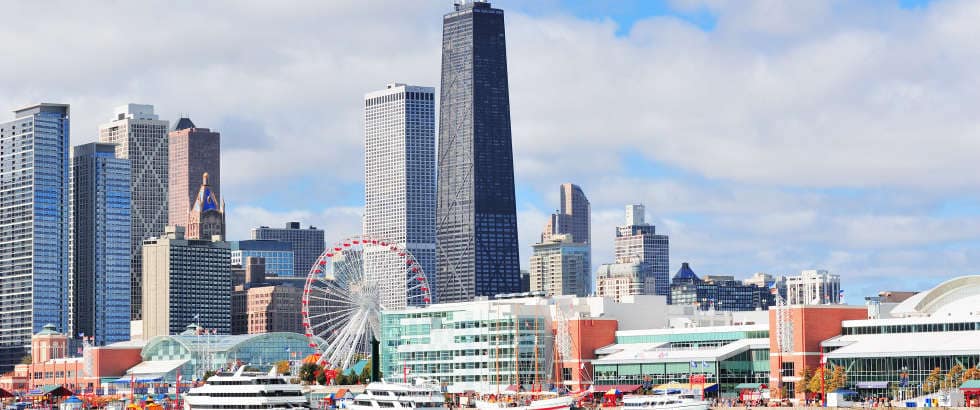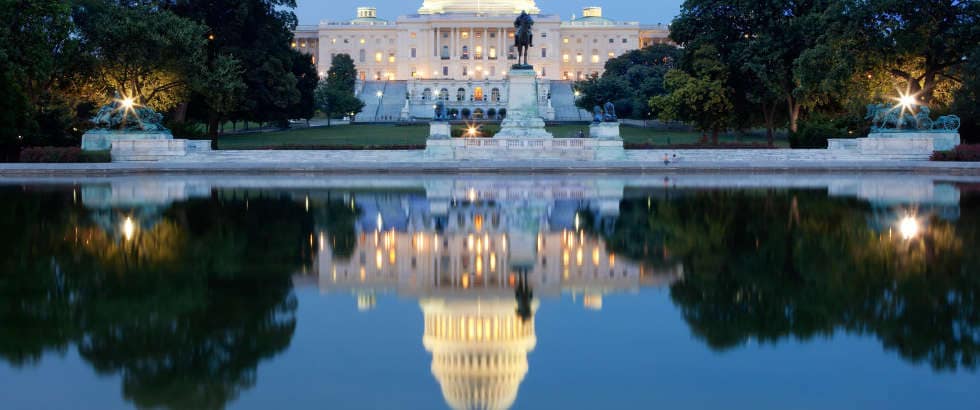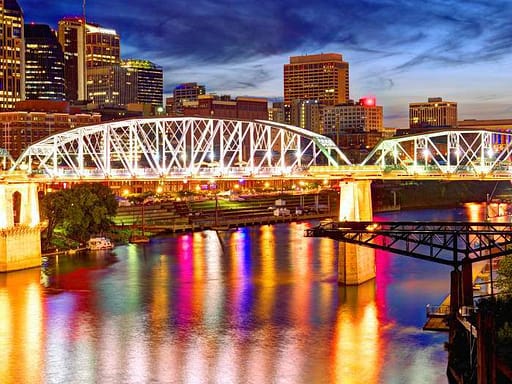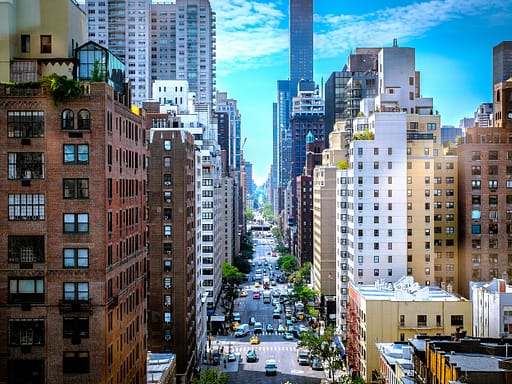Top 5 Most Walkable Cities in the U.S.
Walkability has become a defining feature of what makes a city truly livable. As people grow increasingly conscious of their health, environmental impact, and lifestyle quality, walkable cities offer the chance to explore vibrant neighborhoods, cut down on driving, and experience conveniently located amenities. Some cities in the U.S. are especially designed to cater to pedestrians, with well-maintained sidewalks, efficient public transit, and a wealth of amenities close by. If you’re looking for a city where you can park the car and set out on foot, these are the top five most walkable cities in the United States.
New York City, NY:
New York City tops nearly every list when it comes to walkability, and for good reason. The city’s urban density, diverse neighborhoods, and unparalleled public transportation system make it incredibly easy to live without a car. Whether you’re in the heart of Manhattan or exploring the outer boroughs, New York’s grid system simplifies navigation, and there is never a shortage of destinations to reach on foot.
One of the most appealing aspects of New York’s walkability is its mix of cultures and neighborhoods. You can start your day in Central Park, one of the most famous green spaces in the world, and spend hours walking through winding trails. From there, you can stroll through bustling Fifth Avenue, home to high-end shops and famous landmarks. Heading downtown, neighborhoods like Greenwich Village, SoHo, and the East Village boast narrow streets filled with cafes, boutiques, and art galleries, all of which encourage exploration by foot.
Here are some walkable destinations:
- Central Park: A sprawling urban oasis offering walking trails, scenic views, and iconic landmarks like Bethesda Terrace.
- Fifth Avenue: A vibrant shopping district featuring world-class stores, museums, and the Rockefeller Center.
- Greenwich Village: A charming neighborhood filled with cafes, boutique shops, and cultural venues.
The city’s robust public transportation network complements its walkability. With 24/7 subway service and a vast network of buses, you can easily hop on and off public transit to expand your walking adventure. The connectivity allows residents and visitors to effortlessly move between the boroughs while avoiding the need to drive. From Brooklyn’s hipster neighborhoods like Williamsburg to Queens’ diverse culinary hubs, walking through New York City allows you to fully immerse yourself in the urban experience.
San Francisco, CA:
San Francisco is another city known for its pedestrian-friendly layout, despite its famously hilly terrain. The city’s compact size, combined with a well-planned transit system and pedestrian-first mentality, makes it a top choice for walkability. The city’s distinct neighborhoods, each with their own character and charm, are easy to navigate on foot, and you’ll be rewarded with stunning vistas along the way.
Downtown San Francisco, especially areas like Union Square and the Financial District, is designed with pedestrians in mind. Wide sidewalks, a dense grid of streets, and a high concentration of businesses, shops, and dining options make it a breeze to explore. Just outside the downtown area, you’ll find some of the city’s most walkable neighborhoods, such as North Beach, the Marina, and the iconic Haight-Ashbury. These areas are packed with history, colorful Victorian houses, and some of the best local food in the Bay Area.
Here are some walkable attractions:
- Golden Gate Park: A massive park with gardens, museums, and walking paths perfect for exploring nature in the city.
- The Embarcadero: A scenic waterfront area offering stunning views of the Bay, the Ferry Building, and Pier 39.
- Chinatown: The oldest Chinatown in North America, bustling with markets, restaurants, and historic sites.
Golden Gate Park, stretching over 1,000 acres, offers endless walking opportunities for those looking to escape the urban jungle. From botanical gardens to museums and even a bison paddock, the park is a pedestrian paradise. Similarly, the Embarcadero waterfront, which runs along the eastern edge of the city, is a popular walking route. Here, you can stroll along the water, take in views of the Bay Bridge, and explore attractions like Fisherman’s Wharf and Pier 39.
San Francisco’s public transit system, including its iconic cable cars, helps reduce the need for driving. The BART (Bay Area Rapid Transit) system connects the city with nearby regions, while MUNI buses and trains provide easy transportation within the city limits. While the steep hills might be a challenge for some, the city’s charm and stunning vistas more than make up for the workout.
Boston, MA:
Boston’s walkability is rooted in its colonial history. As one of the oldest cities in the U.S., Boston’s streets were designed long before cars became the dominant mode of transportation. Today, its narrow, winding roads and charming cobblestone paths make it one of the most pedestrian-friendly cities in the country.
Exploring Boston on foot is like stepping back in time. The city’s compact downtown area is filled with historic landmarks, from the Paul Revere House to the Boston Common, the country’s oldest public park. Walking the Freedom Trail is one of the best ways to experience Boston’s rich history. This 2.5-mile route leads you through 16 historically significant sites, offering a glimpse into the city’s pivotal role in the American Revolution.
Here are some walkable destinations:
- Freedom Trail: A 2.5-mile path through 16 historic sites that tell the story of the American Revolution.
- Boston Common: The nation’s oldest park, perfect for leisurely walks, picnics, and outdoor activities.
- Newbury Street: A famous street filled with high-end boutiques, local shops, and cafes.
In addition to its historic charm, Boston is home to several vibrant, walkable neighborhoods. The North End, known for its Italian heritage and cuisine, is a maze of narrow streets lined with cafes and shops. Beacon Hill, with its picturesque brick row houses and gas-lit lanterns, is a quintessential Boston neighborhood that is best explored on foot. The Back Bay area, home to the iconic Newbury Street, is a shopper’s paradise, with a mix of high-end boutiques and local stores.
Public transportation plays a big role in Boston’s walkability. The MBTA, known locally as the “T,” is the oldest subway system in the U.S. and provides easy access to most parts of the city. Whether you’re commuting or just exploring, Boston’s extensive subway, bus, and commuter rail systems make it possible to live in the city without a car.
Chicago, IL:
Chicago, the third-largest city in the U.S., is a great example of how a large metropolis can be incredibly walkable. The city’s downtown area, known as “The Loop,” is one of the most pedestrian-friendly areas in the country, with wide sidewalks, easy-to-navigate streets, and plenty of green spaces. Whether you’re a local or a visitor, walking through Chicago gives you the opportunity to experience the city’s architectural wonders, world-class museums, and stunning lakefront views.
Here are some walkable highlights:
- Millennium Park: A popular spot featuring Cloud Gate (“The Bean“), the Jay Pritzker Pavilion, and beautiful green spaces.
- Navy Pier: A lively area with shops, restaurants, and stunning lakefront views along Lake Michigan.
- The Magnificent Mile: Chicago’s premier shopping and dining district, perfect for a walk with a side of luxury.
Millennium Park, one of the city’s most iconic landmarks, is a must-see for anyone exploring Chicago on foot. Known for its public art installations, including the famous Cloud Gate (or “The Bean”), the park is a central gathering place and offers beautiful walking paths. From there, you can easily walk to other notable attractions like the Art Institute of Chicago, the Field Museum, and Navy Pier.
One of the things that makes Chicago especially walkable is its commitment to public green spaces. The city’s Lakefront Trail, a nearly 20-mile path along Lake Michigan, is perfect for pedestrians and offers stunning views of both the skyline and the lake. In addition to the lakefront, Chicago has an impressive network of parks, including Grant Park, Lincoln Park, and Jackson Park, all of which provide plenty of opportunities for leisurely strolls.
Chicago’s public transportation system, known as the “L,” provides easy access to all corners of the city, meaning you can leave your car at home and explore by foot. The downtown area is particularly well-connected, making it easy to move from one neighborhood to another without relying on a vehicle. The city’s grid system also makes navigation simple, even for first-time visitors.
Washington, D.C.:
Washington, D.C. is not only the political capital of the U.S., but it’s also one of the most walkable cities in the country. The city’s historic landmarks, world-class museums, and pedestrian-friendly streets make it an ideal place for those who enjoy exploring on foot. Whether you’re walking along the National Mall or exploring the city’s eclectic neighborhoods, D.C. is designed for pedestrians.
Here are some walkable destinations to discover:
- The National Mall: Home to iconic monuments like the Lincoln Memorial and the Washington Monument, perfect for a walking tour.
- Georgetown: A historic neighborhood known for its charming streets, upscale shops, and waterfront views.
- Dupont Circle: A vibrant cultural hub featuring embassies, museums, and a mix of trendy cafes and galleries.
The National Mall, often referred to as “America’s front yard,” is one of the most walkable areas in the country. This two-mile stretch is home to some of the nation’s most iconic landmarks, including the Lincoln Memorial, the Washington Monument, and the U.S. Capitol. With wide, well-maintained pathways and plenty of green space, the Mall is a must-see for anyone visiting or living in D.C. The numerous museums along

